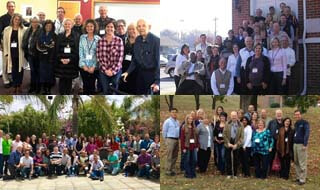I remember that years ago our daughter went to a concert by the Christian musical group, Jars of Clay. The name “Jars of Clay” is based on the phrase Paul used to describe our frail, mortal bodies. “But we have this treasure in earthen vessels. …” (2 Cor. 4:7). The “treasure” refers to the precious, indwelling presence of Christ (Col. 1:27). Why would God entrust such a valuable treasure to us, in spite of our limitations? The verse answers, “that the excellence of the power may be of God and not of us.”
The frailty of our bodies was further emphasized by the apostle Paul as he described the persecution his missionary team encountered: “We are hard pressed on every side, yet not crushed; we are perplexed, but not in despair; persecuted, but not forsaken; struck down, but not destroyed (2 Cor. 4:8,9).
This suffering for the gospel was an indication of the apostle’s identification with Christ. As he wrote in the Colossian letter, “I now rejoice in my sufferings for you, and fill up in my flesh what is lacking in the afflictions of Christ, for the sake of His body, which is the church” (Col. 1:24). Nothing could be added to Christ’s atonement (which was accomplished on the Cross), but heralds of the gospel encounter the same opposition that Christ faced.
Such suffering helps the believer to recognize his/her union with Christ in His death. “Always carrying about in the body the dying of the Lord Jesus …” (2 Cor. 4:10a). Notice that the lack of natural strength corresponds with the provision of the life of Christ in the believer: “that the life of Jesus also may be manifested in our body” (v.10b). As true believers, we are recipients of Christ’s resurrection life! (See Rom. 5:10, Eph. 1:17-20). This connection is repeated for emphasis: “For we who live are always delivered to death for Jesus’ sake, that the life of Jesus also may be manifested in our mortal flesh” (2 Cor. 4:11). The gracious enablement of God empowered Paul to rejoice in his hardships! Can we?
Dr. Earl Radmacher expressed his conviction that the life of Christ is not properly emphasized in our generation.
“As I move around among the churches, I find a great emphasis upon the death of Christ, but very little on the life of Christ. I also find much emphasis on the past tense of salvation, but not on the daily salvation from the power of sin. I believe there is a significant connection in these observations. The death of Christ relates primarily to the penalty of sin, but it is the life of Christ that is basic to daily salvation from the power of sin. Both the efficacy of His resurrection life and the unique pattern of His incarnate life are clearly taught in such verses as 1 Peter 2:21, 1 John 2:6, Hebrews 12:2, 11 Corinthians 3:18, and Philippians 2:5. The death of Christ is primarily a [spiritual] birth message, whereas the life of Christ is a [spiritual] growth message. Today’s churches are witnessing some new births, but very little genuine growth, thus, evangelization apart from disciplization. There is a great need for messages geared to maturation. Lambs need to become sheep and, thus, capable of reproduction of more lambs. There is no better way to move into maturity in Christ than to give careful study to the life of Christ.”[1]
This is the Savior with Whom we are identified!
Are you encountering trials and difficulties in your Christian walk today? Allow the Lord to demonstrate the sufficiency of the indwelling life of Christ through you. Don’t be discouraged that your “jar of clay” ain’t what it used to be; You carry a precious treasure!
Father, thank you for Your gracious salvation. Daily teach us to appropriate the power of Your Holy Spirit, that we may be effective witnesses of the treasure of the gospel. In Christ’s name, amen.
~~~~~~~~~~~~
[1] Earl Radmacher,The Life of Christ in Stereo, preface.
Music from Jars of Clay: http://jarsofclay.com/
Copyright 1998 by John Woodward. Permission is granted to reprint this article for non-commercial use. Please credit GraceNotebook.com. Scripture quotations (unless indicated otherwise) are from The Holy Bible, New King James Version © 1982 by Thomas Nelson, Inc.

















